Preservare e tutelare l'ambiente e promuovere l'uso efficiente delle risorse
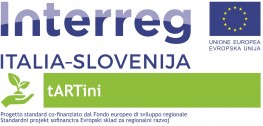
Protezione e promozione delle risorse naturali e culturali
Il progetto “tARTini” ha conservato, sviluppato e promosso l’eredità culturale di Giuseppe Tartini.
Obiettivo generale è stata la fruibilità globale del suo lascito artistico, didattico, filosofico e scientifico finora disperso, combinata al marketing territoriale di un percorso turistico nei luoghi della sua vita quale motore di un crescente afflusso di visitatori nell’area transfrontaliera fra Pirano in Slovenia e Padova in Italia.
Come per i suoi visitatori ai tempi del Grand Tour settecentesco, oggi Giuseppe Tartini può di nuovo esprimere l’attrattività del suo fascino in termini di valore aggiunto e di integratore di sistema del turismo culturale nella regione dell’Adriatico settentrionale.
La sua eredità è a disposizione del mondo intero grazie alla accessibilità globale del sito multilingue Discover Tartini ( www.discovertartini.eu ), dove sono coordinati la pubblicazione dell’archivio musicale e teorico delle sue opere; la guida territoriale e biografica al percorso turistico musicale della Tartini Route; e l’incontro dei più giovani con la sua simpatia e la sua musica nella sezione Tartini Junior.
E’ il risultato del progetto denominato tARTini (Turismo culturale all’insegna di Giuseppe Tartini - Kulturni turizem v znamenju Giuseppeja Tartinija), finanziato dall’Unione Europea con il Programma INTERREG VA Italia – Slovenia 2014 – 2020, realizzato da una partnership di realtà culturali e istituzioni pubbliche, che ha riunito il Comune di Pirano, capofila, con la Comunità degli Italiani di Pirano, il Festival di Ljubljana, il Conservatorio Giuseppe Tartini di Trieste, il Segretariato dell’Iniziativa Centro-Europea (InCE), l’Università di Padova con il suo Dipartimento di Studi Linguistici e Letterari (DSLL).
Giuseppe Tartini (Pirano 1692 – Padova 1770) è stato una personalità affascinante ed eclettica: fu il primo e più famoso violinista nell’Europa del suo tempo, è annoverato fra i maggiori compositori nella storia della musica mondiale, fu un grande didatta con la sua pionieristica visione di un percorso formativo dedicato a studenti di ogni parte d’Europa. Ma fu anche scienziato e tecnologo: pubblicò importanti trattati sull’armonia e sulla teoria della musica, inclusa quella sul “terzo suono” ancora oggetto di studi nella fisica del suono. Si deve a lui la storica modifica dell’archetto del violino, che ha per sempre cambiato, insieme alla postura esecutiva, l’impatto della sonorità e la tenuta della nota.
Discover Tartini cambia organicamente il rapporto fra Tartini ed il suo pubblico di appassionati già numerosi in tutto il mondo:
I risultati del progetto hanno cambiato l’accessibilità all’opera di Tartini nel mondo.
“Discover Tartini” è il brand del nuovo itinerario fisico e virtuale, che offre a studiosi, appassionati e turisti libero accesso al patrimonio musicale, letterario ed espositivo reso disponibile dal progetto:
Partner capofila
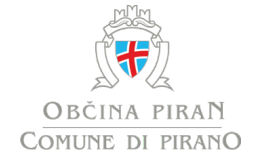
Partner progettuale n.1

Partner progettuale n.2
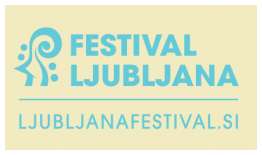
Partner progettuale n.3
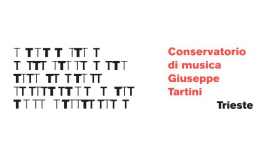
Partner progettuale n.4
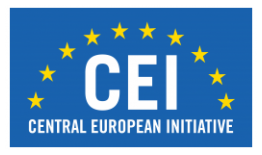
Partner progettuale n.5
| Poster evento annuale 30/05/2018 TARTINI_ITA.pdf ( 538 byte, pubblicato il 11 Giugno, 2018 - 17:09 ) | |
| Newsletter 1 NEWSLETTER 1 - ITA Final.pdf ( 244 byte, pubblicato il 1 Febbraio, 2019 - 14:51 ) | |
| Newsletter 2 Tartini_Newsletter 2 PDFV.pdf ( 247 byte, pubblicato il 1 Febbraio, 2019 - 14:51 ) | |
| Newsletter 3 Tartini_Newsletter 3 PDFV.pdf ( 464 byte, pubblicato il 1 Febbraio, 2019 - 14:51 ) | |
| Brochure Presentazione tARTini 2019-01-18_TARTINI-BROCHURE_web.pdf ( 1 byte, pubblicato il 1 Febbraio, 2019 - 14:51 ) | |
| 2019-12-16__Tartini final brochure IT.pdf ( 3 byte, pubblicato il 21 Febbraio, 2020 - 13:46 ) | |
| 2019-12-16__Tartini final brochure EN.pdf ( 3 byte, pubblicato il 21 Febbraio, 2020 - 13:46 ) | |
| 2019-12-21_Tartini final brochure SLO.2020-01-22.pdf ( 2 byte, pubblicato il 21 Febbraio, 2020 - 13:46 ) | |
| Tartini-Depliant_CR.pdf ( 1 byte, pubblicato il 21 Febbraio, 2020 - 13:46 ) | |
| Tartini-Depliant_EN.pdf ( 1 byte, pubblicato il 21 Febbraio, 2020 - 13:46 ) | |
| Tartini-Depliant_ES.pdf ( 1 byte, pubblicato il 21 Febbraio, 2020 - 13:46 ) | |
| Tartini-Depliant_GE.pdf ( 1 byte, pubblicato il 21 Febbraio, 2020 - 13:46 ) | |
| Tartini-Depliant_IT.pdf ( 1 byte, pubblicato il 21 Febbraio, 2020 - 13:46 ) | |
| Tartini-Depliant_JP.pdf ( 1 byte, pubblicato il 21 Febbraio, 2020 - 13:46 ) | |
| Tartini-Depliant_RU.pdf ( 1 byte, pubblicato il 21 Febbraio, 2020 - 13:46 ) | |
| Tartini-Depliant_SLO.pdf ( 1 byte, pubblicato il 21 Febbraio, 2020 - 13:46 ) | |
| tARTini - D3_2_4 Policy Guidelines FINAL - Italian version.pdf ( 1 byte, pubblicato il 10 Maggio, 2021 - 14:51 ) | |
| Appendice def IT - La realtà di Pirano.pdf ( 318 byte, pubblicato il 10 Maggio, 2021 - 14:51 ) | |
| Accordo di Associazione Discover Tartini - Signed.pdf ( 1 byte, pubblicato il 19 Aprile, 2022 - 12:04 ) |
OBIETTIVI PRINCIPALI DEL PROGETTO
Il progetto di turismo culturale “tARTini” ha perseguito lo scopo di conservare, valutare, sviluppare e promuovere l’eredità culturale di Giuseppe Tartini, compositore e violinista nato a Pirano nel 1692, che nell’Età dell’Illuminismo fu anche scienziato, tecnologo e didatta di fama e rilievo europeo.
L’obiettivo generale è stato raggiunto attraverso la realizzazione dei seguenti obiettivi specifici:
SITUAZIONE ATTUALE DELL’IMPLEMENTAZIONE PROGETTUALE
Il progetto “tARTini” si è concluso dopo tre proroghe al 31 agosto 2020.
Nonostante la cancellazione del programma di eventi organizzato per il 250° anniversario della morte del Maestro a fine febbraio 2020, che è stata determinata dall’esplosione dell’epidemia di COVID 19, le principali attività sono state completate con successo*
In particolare:
( www.ita-slo.eu/sites/default/files/progetti/AccordodiAssociazioneDiscoverTartini-Signed_0.pdf )
a garanzia dell’impegno reciproco a garantire sostenibilità e sviluppo dei risultati raggiunti;
www.ita-slo.eu/sites/default/files/progetti/tARTini-D3_2_4PolicyGuidelinesFINALItalianversion_4.pdf
Come già durante la messa in opera delle attività progettuali, le interconnessioni garantite da tutti i Partner con altre loro iniziative hanno valorizzato la visibilità dei risultati.
La nuova accessibilità del patrimonio tartiniano ha alimentato convegni internazionali di studio, che si sono svolti a Trieste nel settembre 2019 come evento di progetto, e poi a Padova ed a Lubiana in ottobre e in novembre 2020 rispettivamente.
La vivacità della pagina Facebook Discover Tartini, che ha raggiunto in alcune occasioni quasi ventimila contatti ( www.facebook.com/DiscoverTartini ), testimonia del potenziale di ulteriore valorizzazione dei risultati nel lungo periodo, mentre la continuità del sito è attualmente garantita dalla partnership su base volontaria.
Nota * - Attività realizzate nel corso del progetto
L’architettura delle attività volte a realizzare gli obiettivi del progetto ha previsto, secondo le linee guida del Programma, un WP di Gestione, uno di Comunicazione, due WP di sviluppo dei contenuti specifici (il WP 3.1 focalizzato sul recupero e l’accessibilità dell’eredità culturale tartiniana ed il WP 3.2 sulla promozione turistica del brand Discover Tartini) ed un WP4 per gli investimenti sulla Casa Tartini a Pirano.
Il WP Comunicazione è stato il luogo di coordinamento della produzione degli output progettuali destinati al pubblico e della loro promozione sul web. Il Piano di Comunicazione del progetto ha consentito di integrare le attività scientifiche e le produzioni culturali con il disegno del brand turistico Discover Tartini valorizzando il ruolo di tutti i partner nella organizzazione di eventi musicali, educativi, convegnistici e fieristici anche al di fuori dell’area di programma, poiché il target esteso del progetto si è confermato essere di carattere globale.
Intitolato “Giuseppe Tartini e la sua opera “, il WP 3.1 ha curato la ricerca, il riordino e la digitalizzazione dell’opera teorica e musicale di Tartini e delle fonti biografiche, incluso il suo vasto epistolario fisicamente sparso in innumerevoli realtà europee e non solo. In particolare, le Attività 1 e 2 del WP hanno riguardato proprio le ricerche, lo studio e la pubblicazione, cartacea e digitale, delle lettere di Tartini; l’Attività 3 la creazione dell’archivio sonoro della musica tartiniana, che ha incluso anche il ciclo di sei concerti del Festival “Il suono di Tartini” realizzato nel 2019 e la 4 la sua digitalizzazione e caricamento nel sito Discover Tartini, così come è stato fatto con l’Attività 5 per le fonti biografiche e teoriche, tecniche e musicali.
L’Attività 6 ha poi consentito l’organizzazione di un convegno internazionale, che si è svolto a Trieste nel settembre 2019. I suoi atti sono in corso di pubblicazione con risorse proprie del Conservatorio Giuseppe Tartini di Trieste, gli esperti del quale hanno curato anche la redazione dei testi illustrativi del sito Discover Tartini (Attività 7).
“Giuseppe Tartini come nuovo prodotto turistico – culturale transfrontaliero” è la denominazione del WP 3.2, nel quadro del quale è stato sviluppato il nuovo brand Discover Tartini (Attività 9) e le sue linee di policy (Attività 4), e sono stati realizzati numerosi eventi promozionali e concerti sia a Pirano che a Ljubljana.
Con l’Attività 1 è stato identificato, elaborato ed edito il percorso multilivello della Tartini Route, che ha beneficiato anche delle esperienze conosciute dai partner nella visita di studio a Salisburgo, la città di Mozart, del gennaio 2018 (Attività 2 - www.ita-slo.eu/it/tutte-le-notizie/news/progetto-tartini-visita-di-studio-salisburgo ). Collegato agli investimenti per la manutenzione straordinaria di Casa Tartini a Pirano previsti dal WP 4 è stato realizzato il riordino ed il nuovo allestimento multimediale del percorso museale interno (Attività 3 e 11).
Un breve documentario in www.youtube.com/watch?v=hBSIrTk3TgE dà conto dei lavori svolti.
Con l’Attività 4 è stato formulato il Piano di Sviluppo Transfrontaliero per la valorizzazione e la conservazione del patrimonio tartiniano a lungo termine; per la sua redazione nella fase finale del progetto si è fatto tesoro anche delle molteplici esperienze realizzate con le Attività 5 – 6 – 8 – 10 di questo WP, che hanno incluso workshop formativi, eventi culturali per l’infanzia e la gioventù, la partecipazione ad un convegno scientifico a Vienna e nell’autunno 2019 a due grandi fiere internazionali del settore turistico a Londra e Ljubljana. Altre notizie sono reperibili nelle newsletter pubblicate nella sezione Documenti in www.ita-slo.eu/it/tartini?page=1
In vista della formalizzazione della “rete transfrontaliera Tartini” prevista nell’Attività 7, ma impedita dall’esplosione della pandemia, nel maggio 2020 i partner hanno sottoscritto un Accordo di Associazione, qui altresì pubblicato nella sezione Documenti, con il quale si impegnano a dare sviluppo alla loro collaborazione in un più vasto ambito di enti e sostenitori.